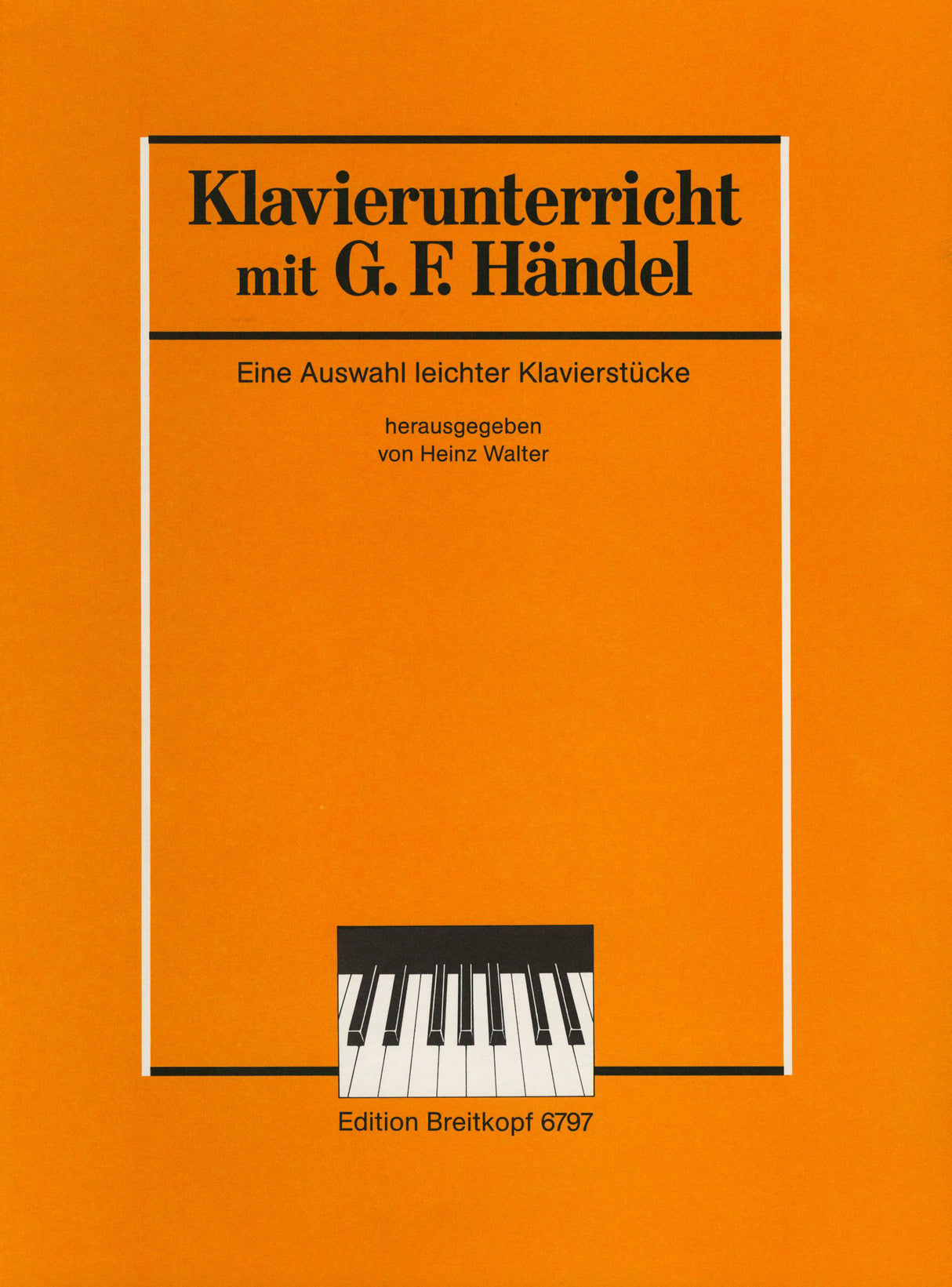Easy Piano Pieces by Handel
In stock and typically ships within 1 business day.
- Composer: George Frideric Handel (1685-1759)
- Instrumentation: Piano
- ISMN:
- Size: 9.1 x 12.0 inches
- Pages: 20
Description
This series of easy piano pieces for teaching purposes presents pupils in the early and early-middle stages with a careful selection from well-known and less-known compositions by important masters. The individual volumes are deliberately kept small in compass, since it is more stimulating for children if the literature used for instruction is changed frequently.
Whereas the keyboard music of J. S. Bach represents one of the high points of his creative output, that of Handel is overshadowed by his operas, oratorios and orchestral works. About 20 suites, a few fugues, chaconnes and other keyboard pieces have been preserved.
The style of these works is fundamentally different from that of Bach's works. Handel's keyboard compositions require the interpreter to take a more active, creative and improvizatory role in the realization of the pieces, and thus to have a developed stylistic sense for baroque keyboard technique (= harpsichord technique) in the widest sense. This may be the main reason for the fact that these imaginative and immensely lively works are scarcely used in teaching. A further reason for this neglect is the absence of suitable editions.
The present keyboard pieces present a cross-section through the musical forms of the baroque keyboard literature. They are of different degrees of difficulty, and – especially because of the need for a fluent rendering of the ornaments – should not be introduced too early in the pupil's studies. (A suitable stage might be after he or she has mastered Bach's two-part inventions.)
Handel gives no indications of modes of attack and articulation, phrasing, tempi or dynamics; even the decorations are only rarely specified by the composer. This must not imply a monotonously uniform playing of the notes on the page. Quite on the contrary, it calls for an independent working out of these aspects of the music on the part of the performer; tempo and dynamics can be determined relatively easily from the form and character of each piece. Phrasing and articulation have been suggested by the editor, but other solutions decided on by the interpreter are also possible. The realization of the suggested ornaments, as well as other supplementations and notes, will be found in footnotes.
Contents:
- Chaconne in G Major
- Courante in F Major
- Fantasia in E Minor
- Fughetta in C Major
- Sonata in A Major
- Two Minuets in F Major
Publishers use a lot of words to describe what they sell, and we know it can be confusing. We've tried to be as clear as possible to make sure you get exactly what you are looking for. Below are descriptions of the terms that we use to describe the various formats that music often comes in.
Choral Score
A score for vocalists that only contains the vocal lines. The instrumental parts are not there for reference. Generally, cheaper than a vocal score and requires multiple copies for purchase.
Facsimile
Reproductions of the original hand-written scores from the composer.
Full Score
For ensemble music, this indicates that the edition contains all parts on a single system (there are not separate parts for each player). In larger ensembles, this is for the conductor.
Hardcover
Hardbound. Generally either linen-covered or half-leather.
Orchestral Parts
Similar to a wind set, this is a collection of parts. In the case of strings, the numbers listed are the number of copies included, though generally these are available individually (often with minimum quantities required).
Paperback
When publishers offer multiple bindings (e.g. hardcover) or study scores, this is the "standard" version. If you're planning to play the music, this is probably what you want.
Performance / Playing Score
A score of the music containing all parts on one system, intended for players to share. There are not separate parts for each player.
Set of Parts
For ensemble music, this indicates that there are separate individual parts for each player.
Solo Part with Piano Reduction
For solo pieces with orchestra, this is a version that contains a piano reduction of the orchestra parts. For piano pieces, two copies are typically needed for performance.
Study Score
A small (think choral size) copy of the complete score meant for studying, and not playing. They make great add-ons when learning concertos and small chamber works.
Vocal Score
A score prepared for vocalists that includes the piano/organ part or a reduction of the instrumental parts.
Wind Set
For orchestral music, this is a collection of wind and percussion parts. The specific quantities of each instrument are notated.
With Audio
In addition to the printed music, the edition contains recordings of the pieces. This may be an included CD, or access to files on the internet.
With / Without Fingering (Markings)
Some publishers prepare two copies - a pure Urtext edition that includes no fingering (or bowing) suggestions and a lightly edited version that includes a minimal number of editorial markings.


